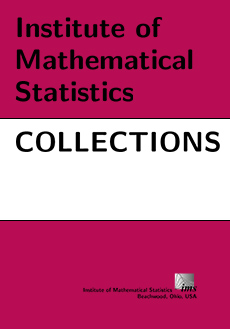Abstract
An important parameter in the study of population evolution is θ=4Nν, where N is the effective population size and ν is the rate of mutation per locus per generation. Therefore, θ represents the mean number of mutations per site per generation. There are many estimators of θ, one of them being the mean number of pairwise nucleotide differences, which we call T2. Other estimators are T1, based on the number of segregating sites and T3, based on the number of singletons. The concept of selective neutrality can be interpreted as a differentiated nucleotide distribution for mutant sites when compared to the overall nucleotide distribution. Tajima (1989) has proposed the so-called Tajima’s test of selective neutrality based on T2−T1. Its complex empirical behavior (Kiihl, 2005) motivates us to propose a test statistic solely based on T2. We are thus able to prove asymptotic normality under different assumptions on the number of sequences and number of sites via U-statistics theory.
Information
Digital Object Identifier: 10.1214/193940307000000293


